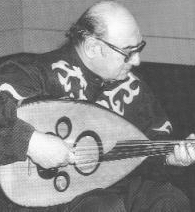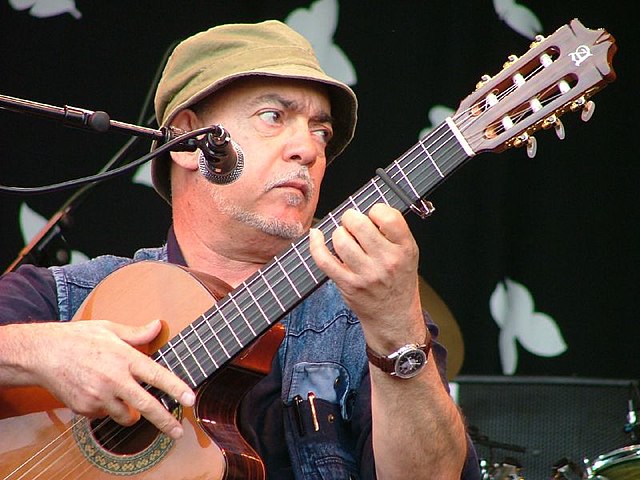Top Qs
Timeline
Chat
Perspective
Music of Iraq
From Wikipedia, the free encyclopedia
Remove ads
The music of Iraq or Iraqi music, (Arabic: موسيقى عراقية), [Romanised: mūsīqā ʿirāqiyya], also known as the music of Mesopotamia, encompasses the music of a number of ethnic groups and genres. Ethnically, it includes Mesopotamian Arabic, Assyrian, Kurdish and the music of Turkmen, among others. Apart from the traditional music of these peoples, Iraqi music includes contemporary music styles such as pop, rock, soul and urban contemporary. Instruments used include the oud, Iraqi santur and rebab.
Remove ads
History

Instruments
In 1929, archaeologists led by the British archaeologist Leonard Woolley, representing a joint expedition of the British Museum and the University of Pennsylvania Museum of Archaeology and Anthropology, discovered the Lyres of Ur or Harps of Ur, which are considered to be the world's second oldest surviving stringed instruments when excavating the Royal Cemetery of Ur between from 1922 and 1934.[1] They discovered pieces of three lyres and one harp in Ur, located in what was Ancient Mesopotamia, modern day Iraq.[2][3] They are over 4,500 years old,[4] from ancient Mesopotamia during the Early Dynastic III Period (2550–2450 BC).[5] The decorations on the lyres are fine examples of the court art of Mesopotamia of the period.[5]
Remove ads
Classical Iraqi music
Summarize
Perspective


Iraqi classical music necessitates some discussion of the social environment, as well as references to the poetry. Poetry is always rendered clearly. Poetry is the art of the Iraqis, and sung poetry is the finest of all. In Baghdad from 760 to 1260, writers spurned musical notation.[6]
Maqam

Across the Arab world, maqam refers to specific melodic modes. When a musician performs maqam performances, the performer improvises, based on rules. There are between fifty and seventy maqams, each with its own mood and characteristics, and many of which have sub-styles. Other characteristics of Iraqi music include a slow tempo, rhythmically free ornamentation or melodic lines, and predominantly minor modes. Instruments include qanun, riq, santur, darbuka, naqareh, ney, djose and oud. Baghdad's Chalgi ensembles typically include the djose and ney, and may also utilize an oud.
Maqama texts are often derived from classical Arabic poetry, such as by Muhammad Mahdi al-Jawahiri, al-Mutanabbi and Abu Nuwas, or Persian poets like Hafez and Omar Khayyám. Some performers used traditional sources translated into the dialect of Baghdad, and still others use Arabic, Turkish, Armenian, Hebrew, Turkmen, Aramaic or Persian language lyrics.
History
The roots of modern Iraqi maqam can be traced as far back as the Abbasid Caliphate, when that large empire was controlled from Baghdad.
The pesteh, a kind of light song which concludes a maqam performance, has been popularized in the later 20th century, growing more prominent along with the rise of recorded music and broadcast radio. Among the most popular pesteh performers are the husband and wife Salima Pasha and Nazem Al-Ghazali.
The most popular modern singers of maqam are Rachid Al-Qundarchi (1887–1945), Youssouf Omar (1918–1987), Nazem Al-Ghazali (1920–1963), Salim Shibbeth (born 1908), Hassan Chewke (1912–1962), Najim Al-Sheikhli (1893–1938), Mohammed Al-Qubanchi (1900–1989), Hamid Al Saadi (1959-) and Farida Mohammad Ali (1963- ).
Remove ads
Modern era
Summarize
Perspective


In 1936, Iraq Radio was established by two of Iraq's most prominent performers and composers, the Kuwaiti-born Iraqi Jewish musicians, Saleh and Daoud al-Kuwaity with an ensemble, with the exception of the percussion player. The nightclubs of Baghdad also featured almost entirely Jewish musicians. At these nightclubs, ensembles consisted of oud, qanun and two percussionists while the same format with ney and cello were used on the radio.[7]
One of the reasons for the predominance of Jewish instrumentalists in early 20th century Iraqi music was a prominent school for blind Jewish children, which was founded in the late 1920s by the great qanunji ("qanun player") Joseph Hawthorne (Yusef Za'arur) (Hebrew: דנדהי ללוואלד-יוסף זערור Arabic: يوسف زعرور).
The most famous singer of the 1930s–1940s was perhaps the Iraqi Jewish singer Salima Pasha.[7][8] The respect and adoration for Pasha were unusual at the time, since public performance by women was considered shameful and most female singers were recruited from brothels.[7]
Numerous instrumentalists and singers of the middle and late twentieth century were trained at the Baghdad Conservatory.
In recent years the Iraqi school of oud players has become very prominent, with players such as Salman Shukur and Munir Bashir developing a very refined and delicate style of playing combining older Arabic elements with more recent Anatolian influences.
Pop music

Until the fall of Saddam Hussein, the most popular radio station was the Voice of Youth, which used to play the popular music of Iraq to continue the culture of the country. The station also played a mix of rock, hip hop and pop music.[9]
Effect of 2003 Iraq War
After the 2003 invasion of Iraq and fall of Saddam Hussein, and with some religious figures coming to power, concerts were forbidden in areas considered as "conservative". However, since 2018, many concert were held in different areas throughout the country. In 2021, Babylon arts festival was held for the first time in almost 20 years. Performers were from Iraq, Middle East, Europe and Africa.[10]
Remove ads
Important musicians
See also
References
Further reading
External links
Wikiwand - on
Seamless Wikipedia browsing. On steroids.
Remove ads

